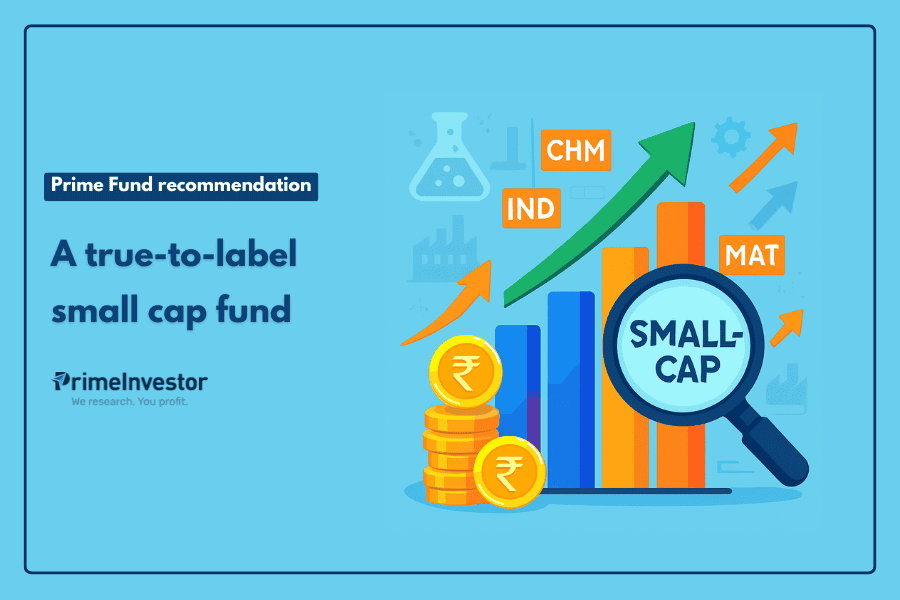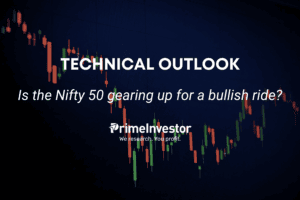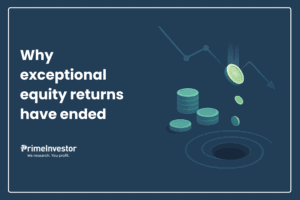With SEBI’s categorization norms confining the large-cap and mid-cap stock bets of mutual funds to the top 250 names, the small-cap universe now offers a large canvas of opportunities. Small-cap funds, which are required to invest at least 65% of their portfolios in this space, are therefore a good hunting ground for growth-seeking investors.

Although valuation concerns arise from time to time, small caps offer a diversity of opportunities that large-caps or mid-caps don’t offer. This is also a space where active fund managers have shown their ability to deliver benchmark-beating returns.
We’re recommending a fund that we added to our Prime Funds list in our June 2025 quarter review – Tata Small Cap Fund. Let’s see why.
Fund management and portfolio
Tata Small Cap Fund (Tata Smallcap) was launched in November 2018 and has been managed by Chandraprakash Padiyar since inception. An additional fund manager, Jeetendra Khatri, joined in October 2023.
The fund has stayed true to its label, with an average allocation to small caps at 84.74% over the past year – more than 9 percentage points higher than the category average of 75.46%. Its mid cap allocation stood at 7.25% versus the category average of 12.62%. In the past year, the fund had no exposure to large caps, compared to 5.08% for the category. It maintained a slightly higher cash holding at 8%, compared to the category average of 6.84%.
The fund follows a strategy of buying early. It aims to invest up to 50% of the portfolio in stocks which are currently out of favour, but expected to give good earnings growth in the coming 2-3 years. From the other 50%, it aims to book profits whenever the market rallies. Its current portfolio suggests that it has booked profits from the financials; expects a revival in earnings from the manufacturing related sectors and is positioning its portfolio accordingly.
It doesn’t try to closely align with the benchmark sector weights. The portfolio composition shows significant active calls by the managers:
- As of June 2025, the fund had around 27% exposure to materials, followed by 17% to industrials and 16% to consumer discretionary. The fund has been overweight on materials, a sector that many fund managers are uncomfortable with. Both the category and the Nifty Smallcap 250 Index hold around 14% in the materials sector. Tata Small Cap’s top holdings include Sudarshan Chemical, Kirloskar Pneumatic, BASF India, and Usha Martin.
- In another contrarian call that worked well for it, the fund has been underweight on financials, with just 6.6% allocation versus 20% for the category and 23% for the index.
- The fund had little churn, with its portfolio turnover at a low 12.69%. The major addition to the portfolio in the past year was Sudarshan Chemical, which the fund started adding in December 2024 and is currently the top holding with 5.18% allocation. The fund also increased allocation in Usha Martin, currently standing at 3.46% of the portfolio. The stocks which it exited in the past year includes IDFC Limited and UTI Asset Management Company.
Tata Smallcap therefore maintains a very distinct portfolio from benchmark Nifty Smallcap 250, with an overlap of just 7.4% as of June 2025. Even though the fund invests in more than 60 stocks, it remains reasonably concentrated, with the top 10 stocks accounting for 38% of assets, enough to benefit from its high-conviction bets.
Why buy?
Tata Small Cap has outperformed both its benchmark and peers since its launch in November 2018. Its outperformance is more evident over longer periods, as seen from 3-year rolling returns. Let’s look at the data in detail. All returns shown below are from the fund’s launch date.
Over one-year rolling periods, the fund has shown a lower standard deviation compared to peers and the index, indicating reduced volatility. Its minimum returns were better (i.e., it performs well in containing downsides) and its maximum returns were also lower. This suggests less extreme swings in returns, an important factor in the smallcap space which is characterized by periods of extreme falls and soaring gains. Downside containment is especially relevant in the case of Tata Small Cap, given its higher-than-average small cap allocation.
Over three-year rolling periods, the fund has delivered higher returns across all key metrics: minimum, maximum, and average, compared to both the category and the benchmark. In terms of consistency, Tata Smallcap beats both benchmark and category more than 90% of the time.
This reflects the fund’s prudent approach: limiting risk in the short term while getting its calls right over the long term. All this, while keeping its volatility close to the index and the category.
Performance in bull and bear markets
To assess how resilient the fund is, we also looked at its performance across recent market cycles; specifically, three bear markets and three bull markets.
Small cap active funds have generally managed to contain losses better than the index during bear phases. Tata Small Cap Fund has done even better than the category in two of the three corrections we looked into. In the most recent correction started September 2024, the fund managed to contain losses better than the index and the returns came close to the category average.
One pattern observed recently is that during bull markets, the index tends to take the lead, with active funds catching up later. In the case of small caps, this is partly because the index is composed of 100% small cap stocks by design, while active small cap funds are required to hold only a minimum of 65% in small caps. Most active funds allocate some portion to higher market cap stocks or cash, which helps during down markets as we saw earlier but can also lead to underperformance during sharp rallies.
The Tata Small Cap Fund showed modest performance in the first bull market we examined, trailing both the index and category. However, it fared better in the more moderate rallies that followed. In the mid-2022 rally, the fund nearly caught up with the index and outperformed the category average. In the most recent bounce-back starting March 2025, the fund’s returns were in line with the category average so far.
Fund Expenses: The fund’s direct plan expense ratio of 0.33% is the lowest in the category, compared to the category average of 0.63%. The regular plan has an expense ratio of 1.67%, which is also lower than the category average of 1.86%. That said, with an expense ratio differential of 1.34 percentage points between the direct and regular plans, there is a strong case for opting for the direct plan.
Fund Taxation: Belonging to the equity category, this fund is subject to 20% capital gains on short term (less than 1 year) capital gains. The long term (1 year or more) capital gains will be taxed at 12.5% with gains upto Rs.1.25 lakh exempted.
Risks & Suitability
Small cap funds are among the highest-risk categories within equity mutual funds. Investors should have a long-term investment horizon of at least 7 years to benefit from this segment. While systematic investments are advisable for all diversified equity funds, they are especially important for small cap funds due to their higher volatility.
Ensure that small cap funds do not make up the bulk of your equity portfolio. There have been periods including stretches lasting nearly a decade, when small caps have underperformed broader markets. Although they have outperformed the broad markets post-COVID and fund managers have managed downside risk well, it is still prudent to limit exposure. This becomes especially important as you approach your financial goals, where an adverse market movement to which small caps are more vulnerable could derail your progress.




17 thoughts on “Prime Fund recommendation: A true-to-label small cap fund”
Hi. I would be keen to know the reason for this article and recommendation now. Usually PI has been very prudent in their timing of sectors and broader markets. Do the team at PI feel that a small cap rally is possible in the next few years? Why recommend this now is my question. Thanks in advance
Hello Sir,
This recommendation is not a timing call on smallcaps; if we do issue such timing calls, it will be clearly explained as such in the report and we have issued such calls before.
Unlike sectors, which need to be timed for entry and exit, smallcaps can be held by all long-term investors with a high risk appetite, without the need to time entry and exit. As mentioned in the article, they work best with a defined allocation and when investing systematically. Any increase or decrease in allocation to smallcaps should be based on how this exposure varies within one’s overall portfolio. We also issue these reports to give more detailed explanations of funds recommended in Prime Funds. Tata Smallcap has recently been added to Prime Funds.
Best regards
Thanks for your prompt reply
Why you have not compared with other small cap funds?Please share their data too, for comparison purpose, at least!
Hello Sir,
If you are looking to compare the performance of small-cap funds, you can use https://primeinvestor.in/mutual-funds-rolling-returns-versus-category/ and also https://primeinvestor.in/mf-screener/ for performance, risk, and portfolio-related comparisons.
We compare all funds in a category during the rating process. While the ratings (1 to 5) reflect how a fund’s relative past risk-adjusted performance stands against its peers, the Buy/Hold/Sell calls reflect our opinion on how the fund is expected to perform going forward.
Best regards
Many thanks.Best regards.
I hold SBI Small Cap as well as Canara Robeco Small Cap funds in Direct-Growth mode. Is Tata SC fund performance better? Regds
Hello Sir,
You can check performance (rolling returns) from the page below:
MF Rolling Returns Comparison with Category – PrimeInvestor
You can also check other performance, risk, and additional metrics (such as portfolio-based) from the MF Screener below:
MF Screener – PrimeInvestor
Best regards
What is your view on Bandhan Small cap fund? It is not in prime funds. But it is in Buy category.
Hello Sir,
Bandhan Small Cap Fund does have a Buy call. The following is our opinion (call reasoning) on the fund:
Consistently beats peers on a rolling 3-year return basis. Consistently beats Nifty Smallcap 250 TRI over rolling 1-year periods. Consistently beats peers on a rolling 1-year basis.
You can visit the Buy/Sell/Hold calls page to check the reasoning for our calls on any fund.
Best regards
I already have an ongoing SIP in Nippon India SmallCap Fund. Would you advise adding an SIP in Tata SmallCap also as a means of diversification in Small Caps. I think there is very little overlap between the two
Hello Sir,
Both Nippon India Small Cap and Tata Small Cap funds are part of Prime Funds. Regarding overlap, you’re right; as per the latest portfolio data, they have an overlap of just 6.41%. You can invest in both these funds. Just keep in mind that this should not increase your overall allocation to the small-cap category beyond what you intended, as that would raise your portfolio risk.
Best regards
Hi. If someone has little/nascent exposure to Nippon, would you recommend Tata instead as the SC fund in the portfolio? For what reasons you’d recommend that or for what you reasons you’d recommended sticking with Nippon? And if say the portfolio is a large cap heavy portfolio already.
In general as well such comparative posts/reports will help imho.
Hello,
Interesting question. While the nuances of portfolio design can be individual-specific, here’s one way to look at it.
Since these two funds follow different approaches, it is fine to invest in both as long as this does not increase the intended smallcap allocation in your portfolio. Nippon India Smallcap is a very diversified portfolio with 230+ stocks and is by far larger in size and so may be less nimble. Tata Smallcap, on the other hand, follows a distinct approach with contrarian calls.
So, if you had to choose only one, ask yourself whether you prefer a broad-based strategy or a slightly contrarian one in the smallcap space. Be aware that Tata Smallcap can underperform during market rallies. If you have a largecap heavy portfolio; you can choose to invest in both.
Best regards
Thank for your kind response.
I have 8 funds in my portfolio already: fc, multi asset, aggr. hybrid, sc, mc, contra, and two prime thematic funds. (+ Two stale/legacy “can’t swallow, can’t spit out” funds – large cap, s&p 500) :/
The reason I was asking is because this high number already sometimes keeps me awake at night 😀
Only SIP is allowed in this fund. Lumpsum is not allowed currently.
I don’t invest in this one but what works for me in Nippon is — keeping or moving money to liquid/arbitrage fund of that AMC and then set up STP such that you can practically use like a lump-sum. But yeah, this is not the real deal.